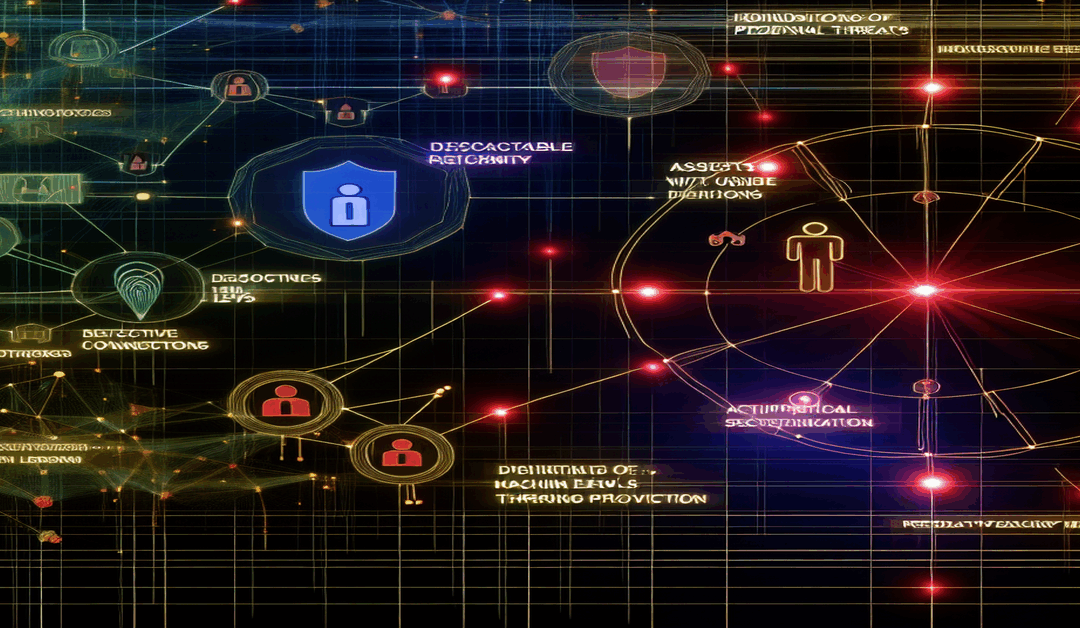The Future of Cybersecurity: Embracing Predictive Security in an AI-Driven World
As the digital landscape continues to evolve at an unprecedented pace, the challenges faced by security leaders have become increasingly complex. Traditional reactive approaches to cybersecurity are no longer sufficient in the face of sophisticated cyber threats. The time has come for a paradigm shift in the industry, moving from reactive defense strategies to **predictive security** approaches. This transformative change is largely enabled by the advancements in artificial intelligence (AI) and machine learning (ML) technologies.
The Evolution from Reactive to Predictive Security
In the past, cybersecurity has been primarily focused on responding to incidents after they have already occurred. This reactive approach often left organizations vulnerable, as they were constantly playing catch-up with cybercriminals. However, the emergence of predictive security represents a new frontier in the fight against cyber threats. By leveraging the power of AI and ML, security teams can now anticipate and prevent potential attacks before they happen[4].
The Technological Foundations of Predictive Security
At the core of predictive security lies the ability to analyze vast amounts of data, both historical and real-time. This data includes global threat intelligence, user behavior patterns, and other relevant information that can provide valuable insights into potential risks and indicators of compromise (IoCs). By utilizing AI and ML techniques, security systems can correlate incidents across various industries and generate **predictive insights** into novel attack vectors that may not yet be fully understood[3].
One of the key advantages of predictive security is its ability to assign risk scores to assets and activities within an organization. By identifying the most vulnerable or likely targets, security teams can prioritize their resources effectively, focusing on the areas that require immediate attention. This risk-based approach enhances overall cyber resilience and ensures the continuity of business operations[4].
The Synergy of AI and Human Expertise
While AI and ML technologies have revolutionized the field of cybersecurity, it is important to recognize that they are not a silver bullet. To effectively defend against evolving threats, security leaders must combine the insights provided by AI with human expertise. This synergy allows for a more comprehensive understanding of the threat landscape and enables organizations to adapt quickly to emerging challenges.
However, it is crucial to avoid complacency when relying on AI-driven security systems. Cybercriminals are constantly adapting their tactics, and overreliance on AI can create blind spots in an organization’s defense strategy. Security teams must remain vigilant and continually update their knowledge and skills to stay ahead of the curve[5].
Navigating the Challenges and Governance of Predictive Security
The adoption of predictive security comes with its own set of challenges and considerations. One of the primary concerns is the potential for overreliance on AI, which can lead to a false sense of security. Additionally, as attackers become more sophisticated, they may develop techniques to evade or manipulate AI-driven security systems.
Another significant challenge lies in the realm of data privacy and AI governance. With the emergence of stringent privacy regulations such as the General Data Protection Regulation (GDPR) and the California Consumer Privacy Act (CCPA), organizations must carefully navigate the complexities of compliance when implementing predictive security measures. Ensuring the responsible use of AI and protecting individual privacy rights are essential considerations in this new era of cybersecurity[5].
The Strategic Implication for Security Leaders
The shift from reactive to predictive security represents a strategic imperative for security leaders. By embracing this new paradigm, organizations can move beyond merely enduring attacks to building stronger cyber resilience for the future. Predictive security enables organizations to adapt and recover swiftly in the face of evolving threats, minimizing the impact of potential breaches[4].
To successfully implement predictive security, security leaders must foster a culture of continuous learning and innovation within their teams. Investing in the development of AI and ML skills, as well as staying abreast of the latest industry trends and best practices, is crucial for staying ahead of the curve.
Conclusion
The future of cybersecurity lies in the adoption of **predictive security** approaches, driven by the power of AI and data analytics. As security leaders navigate this new frontier, they must strike a balance between leveraging the benefits of AI and maintaining human oversight and expertise. By embracing this transformative shift, organizations can proactively mitigate threats, ensure business continuity, and build a more resilient digital ecosystem.
The journey towards predictive security is not without its challenges, but the potential benefits far outweigh the risks. As we move forward, it is essential for security leaders to collaborate, share knowledge, and collectively work towards a more secure digital future. By doing so, we can unlock the full potential of AI-driven security and create a more robust and resilient cybersecurity landscape for all.
#PredictiveSecurity #CyberResilience #AIDrivenSecurity
-> Original article and inspiration provided by ReviewAgent.ai
-> Connect with one of our AI Strategists today at ReviewAgent.ai

